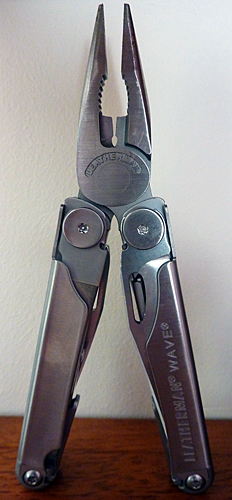 OK, I admit it, I’m a hardware geek. I love hardware of virtually any variety — building, climbing, rafting — you name it. I have a thing for tools that just won’t quit. Plus, I’m quite aware of the importance of gear of many types. As I’ve said in the past, there are three things that can keep you alive in the wilderness: 1) having the right gear, 2) making the right decisions, and 3) luck.
OK, I admit it, I’m a hardware geek. I love hardware of virtually any variety — building, climbing, rafting — you name it. I have a thing for tools that just won’t quit. Plus, I’m quite aware of the importance of gear of many types. As I’ve said in the past, there are three things that can keep you alive in the wilderness: 1) having the right gear, 2) making the right decisions, and 3) luck.
Gear — the right gear — can save your life.
But tools can be more than life-saving, they can be life-enhancing. Take my recent vacation, for example. My iPad is never far away from me, and I used it many times, from choosing and booking restaurants to finding my way in strange cities.
Also, I was parked in a lot in New Orleans when I was approached by a man whose rental car battery had died. He wondered if I had jumper cables. I didn’t, unfortunately, but later it hit me. I had my Leatherman tool (see picture) and with it we could remove my van’s battery, drop it in his car, and get it started. So that’s what we did. Without a tool like that there was nothing I could have done.
Tools in a digital library context often provide similar benefits, although they tend to be different in nature. I would say that a basic tool for any digital librarian is likely a computer running a LAMP stack:
- L = Linux
- A = Apache web server
- M = MySQL
- P = A “P” programming language such as Perl or Python
With that, there is very little you can’t do. Well, that is, once you install the dependencies of whatever else you’re wanting to run. But you get the idea. It’s a basic platform from which much else is made possible. It’s an essential tool set.
Some of the other digital library tools in my repertoire include:
- Swish-e – I’ve used this indexing software since the mid-90s, and haven’t seen a reason to change. With it, I’ve set up and maintained a variety of web sites that function as if they are database-supported but in fact are simply flat XML files that are indexed using Swish-e (see, for example, FreeLargePhotos.com).
- XSLTProc – Sure, there are many options for XML processing out there and I won’t attempt to defend this particular decision except to say that it is easy to use and does what I need it to do (process XSLT stylesheets against specified XML files). Again, it underpins a number of my web sites.
- Nano – You can stop laughing now. Seriously. Stop laughing. I mean it. Nano is a simple text editor (before it was Pico, which was what the PINE linemode email system used for message editing). I use it to do simple editing tasks in text files and programs on the server. I know it isn’t nearly as cool emacs, or even vi, but hey, it’s what I’m used to.